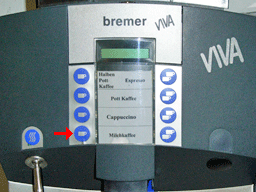A Victim of (Violated) Location Constancy
By Gerd Waloszek
The Story
People who are familiar with the psychology of human perception will know that there are several constancy mechanisms implemented in our brains in order to make life easier. For example,
- Size constancy helps us to recognize people who are far away as human beings, not as flies – as native africans do who live in the jungle and therefore lack this mechanism
- Color constancy lets us see white shirts as white shirts, not as green ones – as cameras do when you take a photo of someone who wears a white shirt in the forest
 |
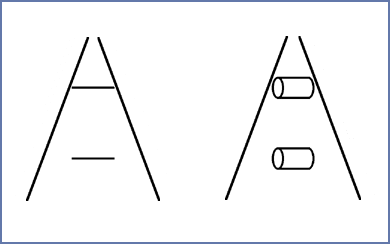 |
Figure 1: Examples of size constancy (from "Optical Illusions" on the SAP Design Guild; left: Roger Shepard; right: Ponzo illusion)
Location Principle in User Interfaces
Not surprisingly, HCI also has a constancy principle, called location constancy. In short, designers should not violate this principle. They might do so by offering the same functionality in different places, for example, depending on the day of the week. Sorry, I was joking... But sometimes, UI designers are driven by the devil or overwhelmed by the sheer number of principles that they have to observe, that they run havoc. As an example, Microsoft planned to arrange pull-down menus according to the frequency of use. Here, we have two conflicting principles, frequency of use and location constancy. Of course, it is not always clear from the beginning, which principle should rule, but a few user tests should reveal soon, which one should have priority. Obviously, Microsoft initially opted for the wrong one. I still remember that a colleague proudly informed us about this new feature in a late version of MS Office. As I never came across it, it looks as if Microsoft – luckily for the users – removed it last minute...
Another principle for sorting menus is recency of use. For example, MS Outlook uses this principle for certain menus. Whenever I want to look into the inbox for my Website, I have to use the "Open -> Other User's Folder" command. Usually, the inbox comes first. But when I looked, for example, at someone else's calendar or inbox using this command, that item will become the first one, when I open the menu next time. Each time this happens, I get annoyed: Why can't I determine the order of the menu items, why has Outlook to do it its way?
Location Constancy in Real Life Situations
Actually, the principle of location constancy can be extended beyond user interfaces to everyday life. We all suffer from its violations from time to time. Here are a few examples.
Usually, I park my bicycle in the same area, preferably even the same parking lot. Sometimes, nasty people take this lot and I am forced to use another one, often far away from the original location. You can bet that in at least half of the cases, I first go to the original lot when I want to ride home. The same applies to keys that we put in the wrong pocket or glasses that we deposit at an uncommon place – we search endlessly for them. Regrettably, these problems worsen, the older you get...
Recently, I received a new car, which has the gear shift in a place different from my old one. I could not return my old car immediately after I got the new. But I used only the new car from then on, though not extensively. The evening before I returned my old car – it was already dark – I had to drive it to the car wash. But when I wanted to shift gears, my right hand always grabbed at nothing – I was already too much used to the new position of the gear shift. It took me quite a while, until shifting gears went smoothly again...
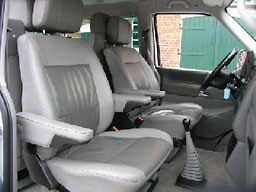 |
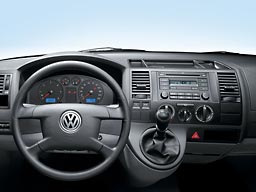 |
Figure 2 : Location of the gear shift in my old car (VW T4, left) and my new one (VW T5, right)
Yet Another Coffee Machine Story...
Finally, a small tragedy... at work, I used to get my coffee at a coffee machine in a nearby building because this was the shortest route to a coffee machine, which provided milk coffee. Milk coffee was the bottom item on the machine's selection menu (see figure 3 left). Now, the building is being redecorated, and the coffee machines are shut down. The nearest machine offering milk coffee is located in another building. As usual, I had not put on my glasses and pressed the bottom button, only to find out – to my dismay – that I had selected "ordinary coffee" (see figure 3 right). I must confess that this was not the first time that I had pressed the wrong button on a coffee machine by habit.
|
Photos: G. Waloszek |
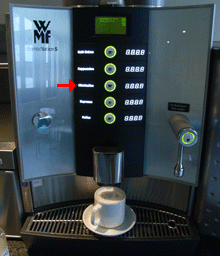 |
Figure 3: Buttons on the Bremer coffee machine that I am used to (left) and on the WMF that I have to use now (right) (click images for larger versions)
Probably, none of the people who install those machines has ever thought of employees pressing wrong buttons by habit – and definitely they would regard these as really stupid. But these "stupid" people – apart from their illustrious academic degrees – just follow inherent principles of human behavior – at least that's my excuse for these issues.
Originally Published: 03/22/2007 - Last Revision: 01/31/2009
Gerd Waloszek |
made by |

